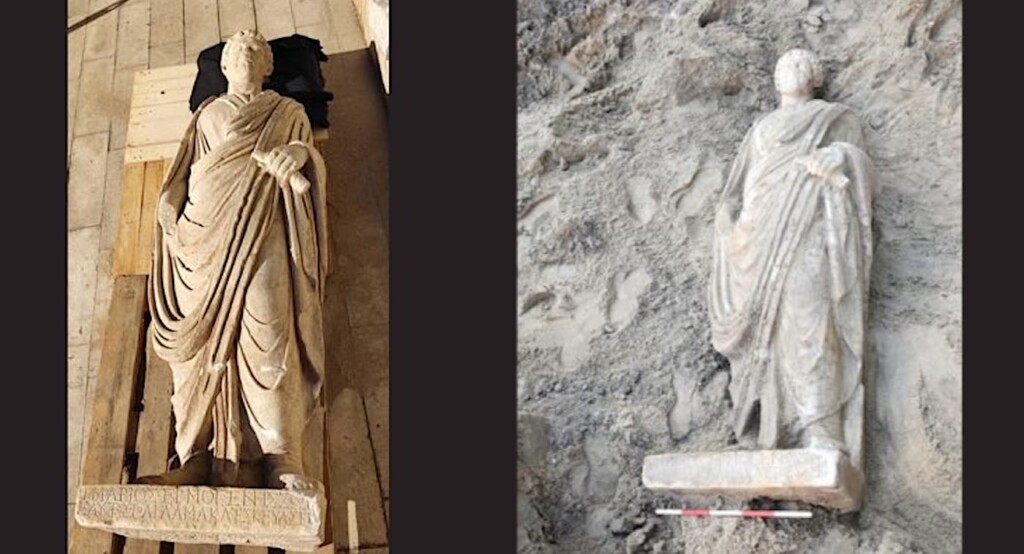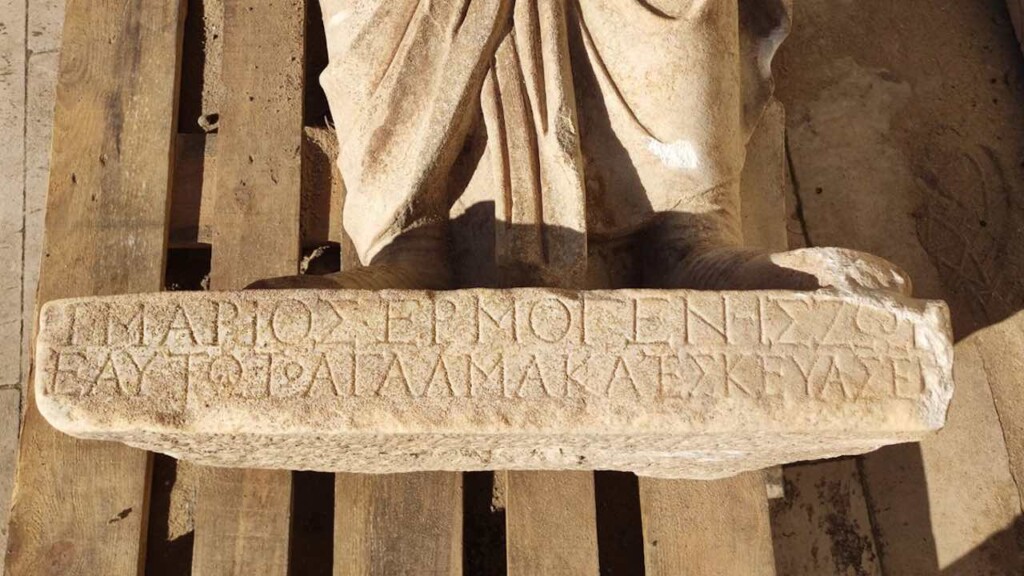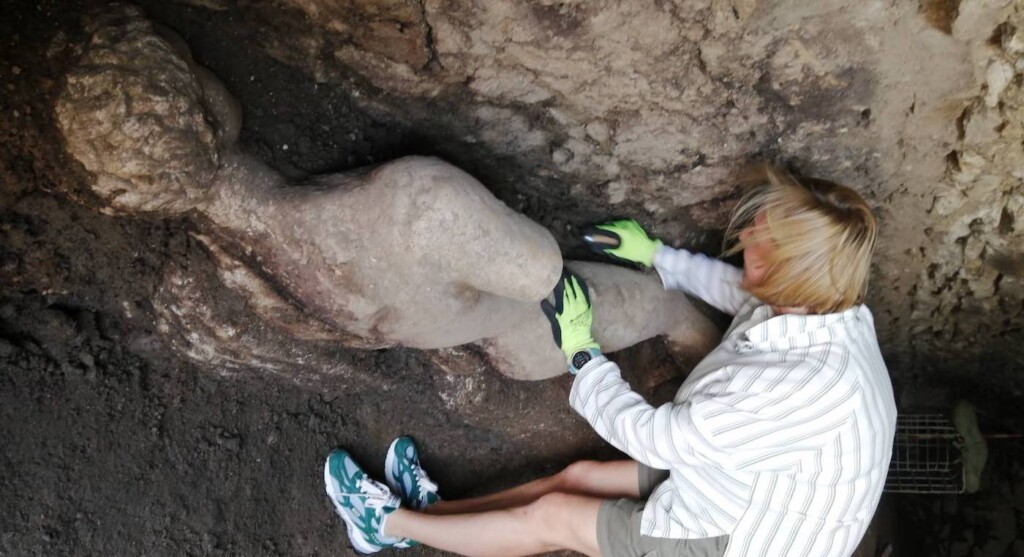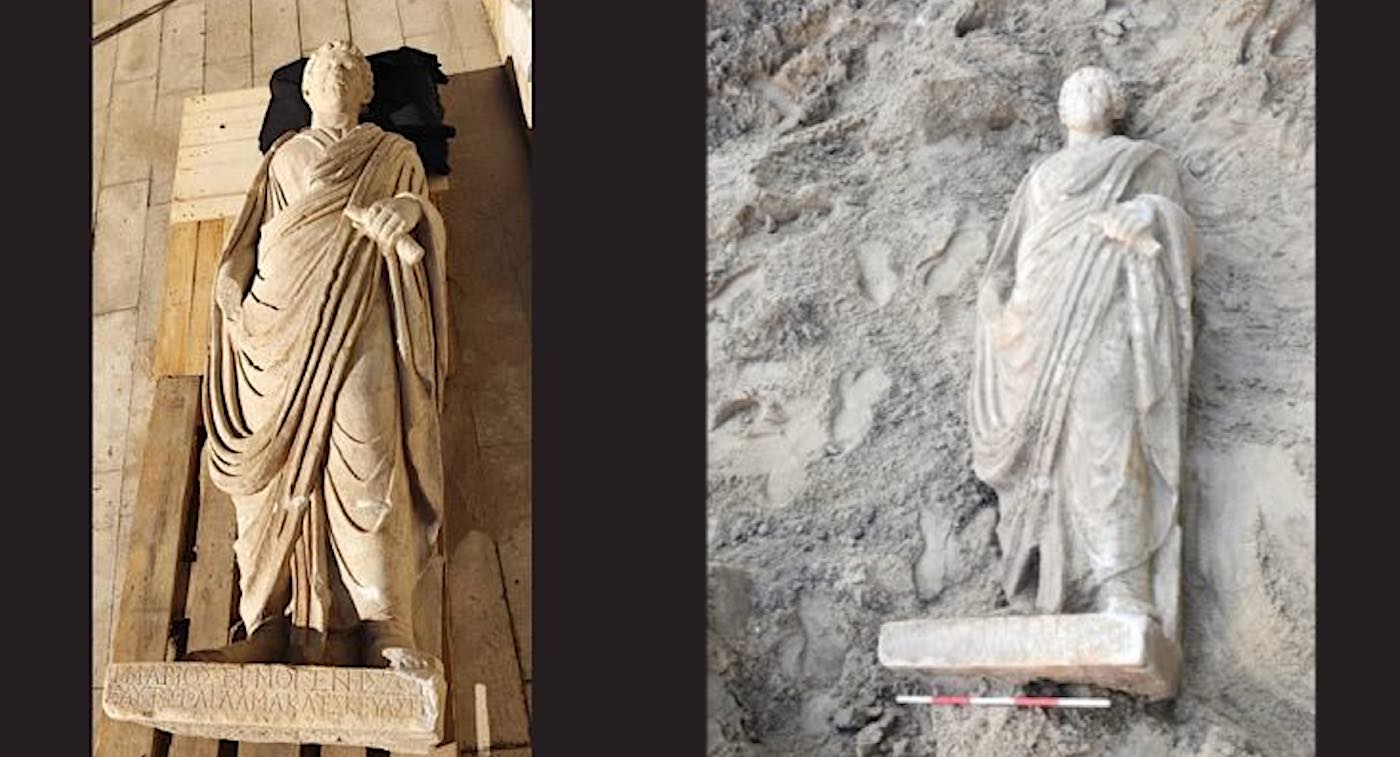
Missing only a hand, a life-sized statue of a Roman citizen unearthed recently in Bulgaria is about as pristine as they come.
Found during construction work near the walls of the old fortress in the city of Varna, it depicts a middle-aged man holding a scroll and wearing a Roman-era toga—and thanks to a carved inscription, they even know his name.
The construction contractor, Georgi Kraychev, notified museum authorities after the shocking moment they came across the statue buried in the dirt.
Made of white marble, it had been remarkably well-preserved. Connected to both the Greek and Roman worlds, the city of Varna was once known as Odessos in antiquity.
Reflecting this heritage, the Roman individual was described on the base of the statue in Greek writing: “G(aius) Marius Hermogenes.”
Overly excitable fans of Roman history (including me) may wonder whether the statue bears some relevance to the Roman statesman, general, reformer, and seven-time consul, Gaius Marius—one of the most influential figures of the late Republican era.
However, the Sophia Globe reports that the statue likely dates to the 3rd century when the Roman Empire was still unified between East and West—and very much included Bulgaria.

This would have been nearly 400 years after Marius’ death, and Roman naming customs can be frustratingly repetitive. For example, Gaius Marius’ son was also named Gaius Marius.
MORE BULGARIAN STORIES: 70 Vultures Released Into Bulgaria to Start Wild Population After Dying Out 60 Years Ago
The Varna Black Sea Regional History Museum said that the statue is awaiting cleaning and restoration.
Recently, GNN reported that excavations in the sewers of the classical city of Heraclea Syntica, also in Bulgaria but near the border with Greece, turned up another remarkably well-preserved marble statue.

SIMILAR DISCOVERIES: Archaeologists Find 24 Bronze Statues ‘Without Equal’ Preserved in Tuscany for 2,300 Years That ‘Rewrite History’
That one depicted not a human, but the messenger god, Hermes, and therefore was probably connected with Alexander the Great, the king of the ancient Greek kingdom of Macedon.
Evidently, Bulgarian soils are part-sand and part-marble wonders.
SHARE This Amazing Find From Bulgaria’s Past With Your Friends…




















